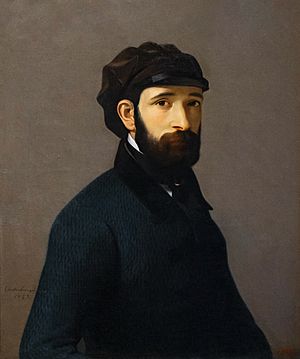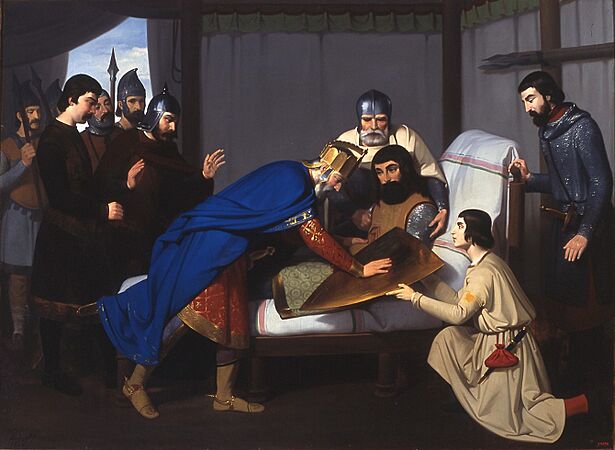Claudi Lorenzale facts for kids
Claudi Lorenzale i Sugrañes was a famous Spanish painter. He was born on December 8, 1814, and passed away on March 31, 1889. Lorenzale was connected to a group of artists called the Nazarene movement in Germany. He also worked to bring back interest in the history of the Catalan region through his art.
Contents
Claudi Lorenzale: A Talented Spanish Painter
Early Life and Education
Claudi Lorenzale was born in Barcelona. His father was a hatter and had Italian family roots. Claudi started studying painting when he was just twelve years old in Murcia.
After 1830, he joined the Escola de la Llotja in Barcelona. Here, he learned from a teacher named Pelegrí Clavé. In 1837, he won first prize in painting for his artwork called "Sísara derrotat per Barac." This painting showed the defeat of Sisera by Barak.
In the same year, he traveled to Rome. He went with another painter, Pau Milà. Pau Milà followed the artist Friedrich Overbeck, who was part of the Nazarene movement. Claudi Lorenzale was greatly influenced by Overbeck's ideas. He continued his studies at the Accademia di San Luca in Rome, where he also won a first prize for his painting.
Becoming a Teacher and Director
Claudi Lorenzale returned to Barcelona in 1844. He then started a career focused on pure art. He was inspired by Medieval art and the lessons he learned from Overbeck. To achieve his goals, he opened his own art school. This school became very well-known.
His reputation as a teacher grew a lot. In 1851, he became an associate professor at the Escola de la Llotja. The next year, he became a full professor. In 1858, he was made the Director of the school. He held this important position until 1885. He retired from the academy three years later. Claudi Lorenzale passed away in Barcelona when he was 74 years old. Some of his most famous students included Marià Fortuny, Antoni Caba, and Tomàs Padró.
Images for kids
-
Origin of the Shield of the County of Barcelona (1844)
-
Portrait of the painter's wife and children - Museu Nacional d'Art de Catalunya
See also
 In Spanish: Claudio Lorenzale para niños
In Spanish: Claudio Lorenzale para niños




